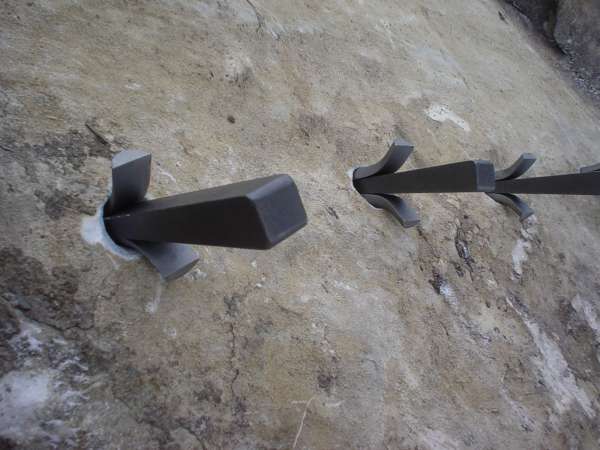

Within a year, the price of quarried stone was cut in half. Robbins hired Tarbox to teach his technique to the quarrymen at the quarries in Quincy, Massachusetts. Instead of using only two holes, Tarbox drilled as many holes as were necessary, spacing them six to eight inches (15–20 cm) apart. Tarbox, who was using a modified version of the plug and feather method that had been described by Deane. In a chance encounter during the same year, Robbins came into contact with Mr. And commonly, very regular shaped pieces for building may be obtained." (pages 268–269) In 1803, Lieutenant Governor Robbins of Massachusetts was a member of a committee that had been tasked with building a new state prison. Then filling each hole with two semi-cylindrical pieces of iron, drive a long steel wedge between them. Deane wrote: " … another method of breaking rocks, which ought to be generally known, and which sometimes turns out cheaper, is this: Drill two holes in a stone, ranging with the grain, when that can be discovered with the eye. In New England, the plug and feather technique is first mentioned in The New-England Farmer Or, Georgical Dictionary (1790) by Samuel Deane. It was, for instance, used to make the rails for the Haytor Granite Tramway in 1820. On Dartmoor, Devon, England, the process is known as feather and tare and it was used from around 1800 to split the large blocks of granite found on the ground there. The technique was also used by the Romans. Evidence of this method for cutting obelisks in the quarries of Aswan can clearly be seen. This was the most common method used by the Egyptians for quarrying limestone and sandstone. Bronze plugs and feathers were then driven into grooves which had been previously cut with a chisel and mallet. With this simple mechanical technique, the stone was first measured and marked. Variations of the plug and feather method have been used since ancient Egyptian times. While the stone might be recoverable, it requires additional work. Attempting to split the stone too quickly may cause the stone to "blow out" at the site of the plug or split at an undesirable section. Eventually a crack appears along the line that was scored on the surface and the stone splits apart. Between each series of strikes, a pause of several minutes allows the stone to react to the pressure. An audible tone from the wedges changes to a 'ringing sound' when the wedges are tight. The plugs are then struck with a hammer in sequence. Plug and feather sets are then inserted in the holes with the "ears" of the feathers facing the direction of the desired split.

A number of holes are then cut or drilled into the stone face along the scored line approximately 10 – 20 cm apart. After the location of the intended split is chosen, a line is scored on the surface of the stone. The stone is first examined to determine the direction of the grain and to identify any potential defects.

Multiple sets of plug and feathers are typically used to split a single, large piece of stone. A stone being split using a single plug and feathers


 0 kommentar(er)
0 kommentar(er)
